The Roman Empire
What was the Roman Empire?

Beginning in the eighth century BC, Ancient Rome grew from a small town on Central Italy's Tiber River into an empire that at its peak encompassed most of continental Europe, England and Wales in the United Kingdom (then known as Britannia), Spain (Hispania), France (Gaul or Gallia), Greece (Achaea), the Middle East (Judea) and the North African coastal region.
According to the Roman legend, Romulus was the founder of Rome. Romulus and his twin brother Remus were the sons of the God Mars. When they were very young they were abandoned by the banks of the River Tiber and left to fend for themselves. Luckily for them they were found by a she-wolf who took pity on them fed them with her milk. The boys were later found by a shepherd who raised them. The boys grew up to be very strong and clever and they decided to build a town on the spot where the Shepherd had found them. They named their town Rome.
The Empire was conquered by the Roman Army and a Roman way of life was established in these countries. At its height, the Roman Empire covered over 2 million square miles stretching from the Rhine River to Egypt and from Britain to Asia Minor.
Famous Roman emperors
In the 500 years Rome was an Empire, there were over 140 different emperors. The Roman emperor was the ruler of the Roman State during the imperial period (starting at about 27 BC). If a man was "proclaimed emperor" this normally meant he was proclaimed augustus, or (for generals) imperator (from which English emperor ultimately derives).
Below are some of the most famous Roman Emperors of all times:
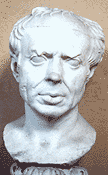
Marius - The great Man of the Army
Gaius Marius was the man who organized the army into the most effective fighting machine on Earth. At times it appeared nothing could withstand the mighty legions of Rome. It was Marius who changed the way the army organized itself. Men from the provinces could now sign up to serve in the Roman army, and in time become Roman citizens themselves. So too was it Marius who granted land to the veterans of the legions in reward for their services. He also won some famous battles with his new army, most famous of all the Aquae Sextiae and Campi Raudii, where his victories saved Italy and Rome from an invasion of barbarians from the North.

Caesar - General, Politician, Statesman
Julius Caesar is no doubt the most famous Roman of them all. He conquered Gaul in a brilliant campaign which is still used in studies for training generals today. His victories in Gaul brought into the empire what should later become one of the most important new territories to the empire. The conquest of Gaul also brought the border of the empire to the river Rhine, where it should remain for centuries to come. He also led expeditions into Germany and Britain, which were at that time completely unknown to Romans. But his political enemies never stopped plotting against him and tried to take away his power. Caesar famously crossed the river Rubicon (which was the border between the province he ruled and the Italian territories of the Roman empire) and took power over Rome as a dictator. When away in Egypt he fell in love with the legendary Egyptian queen Cleopatra. Julius Caesar also reformed the calendar. With only minor changes his is the calendar we use today. One month, July, is named in his honour.
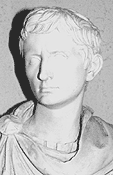
Augustus - The first Emperor
Augustus was the first emperor of Rome. His real name was Octavian but he was given the name 'Augustus' by the senate as an honour for his great achievements. He avenged the death of Caesar together with Mark Antony, before falling out with him. He defeated Mark Antony together with the famous Egyptian queen Cleopatra and thereafter, together with the senate of Rome, created a new constitution for the great empire. Augustus stood at the head of this empire as the emperor. He used his ruled wisely and built roads, aqueducts and buildings. Not only was Augustus the first, but he was most certainly one of the best emperors Rome ever had.
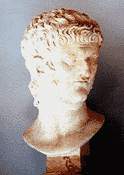
Nero - The Madman of Rome
Nero is the most notorious Roman of all times. It is most likely that Nero was insane. He came to power because his mother murdered his step-father emperor Claudius. During his rule much of Rome burnt down in the Great Fire of Rome. Helpless to stop the fire, he is supposed to have sung as he watched Rome burn. After this he built himself a magnificent palace on some of the land cleared by the fire. To quell rumours that he had started the fire himself, he blamed the Christians for it and then had many captured and thrown to the lions in the circus.
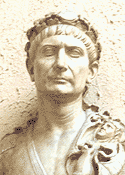
Trajan - The kind-hearted Soldier
Trajan is one of Rome's most outstanding emperors. Under his rule the empire reached its largest extent. He famously conquered the rich kingdom of Dacia North of the Danube. Trajan was one of the greatest soldiers among the emperors. But unlike many of the later warrior-like rulers, he was also known for his wisdom and dignity, and his humility when dealing with the senate. Alike Augustus, Trajan's reign was a glittering one, during which many public works, roads and harbours were built. He also set up an imperial fund which should look after the poor, especially the children.
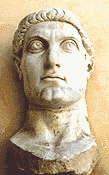
Constantine the Great - Unifier of the divided Empire
Constantine the great was the first Christian emperor of the Roman empire. He defeated all the other would-be emperors and re-united the empire, which had been divided between many rulers. He also decided to move the capital of the empire from Rome to a town called Byzantium, which he renamed after himself - Constantinopolis (Greek for: the city of Constantine). He also called together many bishops for the Council of Nicaea at which the exact nature of the Christian religion was defined. It is known today as the 'Nicene Creed'. For his many achievements he is known as 'Constantine the Great' and in the Christian church he is known as 'Saint Constantine'.
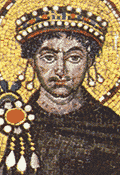
Justinian - The last 'Great' Emperor
Under the rule of Justinian, the Eastern empire (the West had since fallen to the barbarians) enjoyed a last flowering. His great generals Belisarius and Narses reconquered many parts of the empire, including the city of Rome itself. So too is Justinian known to have collected the many Roman laws and created a unified code of laws, the so-called 'Justinian Code'. This code formed the basis of all systems of law in the Western world. He also built many great buildings in his capital, the city of Constantinople. His most outstanding building is the great church Santa Sophia, which today is the famous mosque 'Aya Sophia' in the Turkish city of Istanbul.
The Roman gladiator

The word 'gladiator' comes from the Latin word for sword, gladius, so it literally means a swordsman.
Romans liked watching other people die. They also believed that their gods liked gladiatorial fights, so that going to the fights was a sort of religious experience as well as being fun. Many Roman people went to big amphitheaters to see professionals fight.
The largest and most spectacular gladiator fights were those staged in the Colosseum. It is an elliptical amphitheatre in the centre of the city of Rome, Italy. The huge circular amphitheatre could seat up to 50,000 people. Spectators were given tickets showing their seat place and also which of the 80 entrances they should use. It is considered one of the greatest works of Roman architecture and Roman engineering.
The fall of the Roman Empire
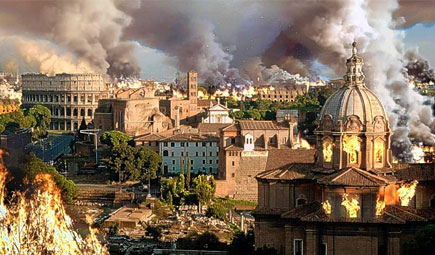
The Fall of the Empire was a gradual process. The Romans did not wake up one day to find their Empire gone. By 369 AD the Empire was beginning to crumble for the following reasons:
- The Government was running out of money.
- The people had to pay very high taxes - up to a third of their money.
- The rich were given grants of money and land which made them richer while the poor got poorer.
- There was not enough money to pay for the army.
- Barbarians from Germany called vandals were conquering parts of the Empire and there were not enough soldiers to fight back.
- Although the outer edges of the Empire were well defended, there was no defence with in the Empire. This meant that once barbarians had broken through there was nothing to stop them marching to Rome.
- The Roman network of roads allowed invaders an easy route to Rome.
- No one had decided on a good way to choose an Emperor. This meant that any general could march into Rome, kill the Emperor and make himself the next Emperor. In 73 years there were 23 Emperors and 20 of them were murdered.
What did the Romans give us?
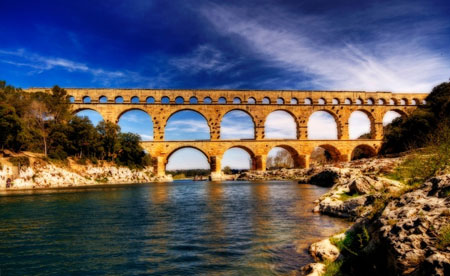
Long after the demise of the empire, the legacy left behind continued to shape other civilizations through history. Influences of cultural values, religious beliefs, as well as technological and other achievements of Ancient Rome can still be felt today.
The Language
Today, the Romance languages, which comprise all languages that descended from Latin (Italian, French, Spanish, Portuguese and Romanian) are spoken by more than 600 million people. The Romans spoke and wrote in Latin and many of our words we use today are based on Latin words.
Religion
The Roman Empire helped the emergence of Christianity as a major world religion. Since emperor Theodosius I (379-395 AD), the official state church of the Roman Empire was Christianity. Subsequently, former Roman territories became Christian states which exported their religion to other parts of the world, through colonisation and missionaries.
Architecture
Many Roman buildings still stand, just this is evidence of how good Roman architecture was. Roman architecture has many connections with Greek architecture through the use of pillars and arches. Since the Renaissance, this style has been popular around the world.
The Calendar
The calendar we use today is more than 2,000 years old. It was started by Julius Caesar, a Roman ruler. It is based on the movement of the Earth around the sun, and so is called the 'solar calendar'. The solar calendar has 365 days a year, and 366 days every leap year, or every fourth year. The names of our months are taken from the names of Roman gods and rulers. The month 'July,' is in fact named after Julius Caesar himself.
Laws and the legal system
Although the law of the Roman Empire is not used today, modern law in many jurisdictions is based on principles of law used and developed during the Roman Empire. Some of the same Latin terminology is still used today.
The Roman Empire also gave us straight roads, central heating, concrete and aqueducts (bridges for water).